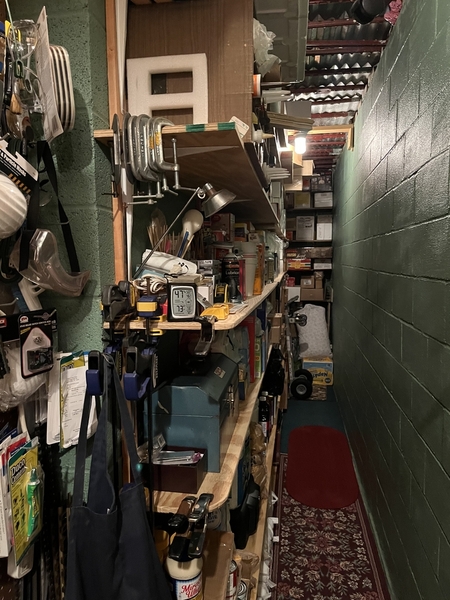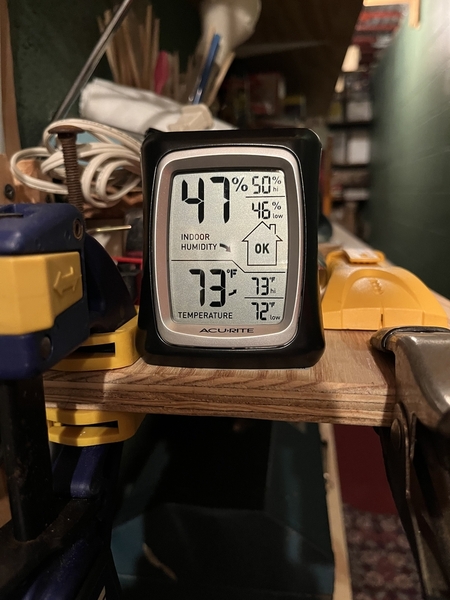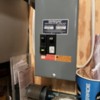Very timely topic.
We discovered recently that our water pressure tank (attached to the well feed) had acquired a slow leak from a bottom fitting. It's about 30 years old (part of the original build of the home). A cyber search sez those pressure tanks are good for maybe 15-20 years, water quality a significant variable to aging. We were overdue.
About 15 years ago the township came through with city water in support of a new subdivision nearby. We tapped in...but kept the well source for the outside taps. Then, the layout was built...right over top of the well pressure tank. You know...out of sight, out of mind?
Well, wife pulled some boxes from beneath the layout, that had been hiding the pressure tank...and found 'evidence' of the water leak. Never was a flood issue. But you could tell from the concentric mineral ring witness on the surrounding floor that the tank needed replacing...or a Depends!! Further examination of the boxes, a nearby wood baseboard molding, etc., said we perhaps were on the cusp of a mold issue.
And, so, the project du jour quickly segued from happy things to OMG!'s...basement humidity, leaking water pressure tank, mold-search. IOW, mental mayhem.
Well, within a couple hours we were visited by our favorite plumber...confirming the need for a pressure tank..."And, no, you do NOT want to connect your outside taps to city water if the pump is working just fine!", sez he. He's booked into October, but will be installing the new tank October 26. Further analysis of cardboard boxes (none which sat directly on the floor, but elevated on roll-around dollies/shelves) within a few feet further from ground zero said we perhaps were over-hyped by the mold concern.
Our plumber agreed...but he looked at our ancient dehumidifier with an expression that clearly said..."Really?? REALLY, folks!!?? THIS is what you're controlling your humidity with????" We had no idea what the actual humidity level was (See GRJ? You're not alone!). It felt...fine. The knob was set at #4...whatever that meant. In fact it had been at that number since the day we bought it...about eleventy-seventy years ago (Remember Sears?). We've had no rusty track. Wife would say that the basement didn't seem to smell any mustier than her husband! But it was clear...Ol' Shakey was like the pressure tank...and me!...past its prime.
In fact it had been at that number since the day we bought it...about eleventy-seventy years ago (Remember Sears?). We've had no rusty track. Wife would say that the basement didn't seem to smell any mustier than her husband! But it was clear...Ol' Shakey was like the pressure tank...and me!...past its prime.
So we bought two new whiz-bang 35-pint GE's for the basement. And GOOD GRIEF!, when I first turned them on, the readouts said "YO!!...you're currently at 75%!!" Three days later, we're down to 45% and holding. And the bucket-dumping brigade has already voted to take advantage of the hose attachment points on the machines and run the hose to the sump and/or floor drains.
Three days later, we're down to 45% and holding. And the bucket-dumping brigade has already voted to take advantage of the hose attachment points on the machines and run the hose to the sump and/or floor drains.
So, hopefully, we cellar dwellers are on the road to renewed dryness...an once again there's peace in the valley. Yay!!
KD
![]() . I bought a new dehumidifier and with that and the AC it is running like 40% humidity which is fine.
. I bought a new dehumidifier and with that and the AC it is running like 40% humidity which is fine.



















